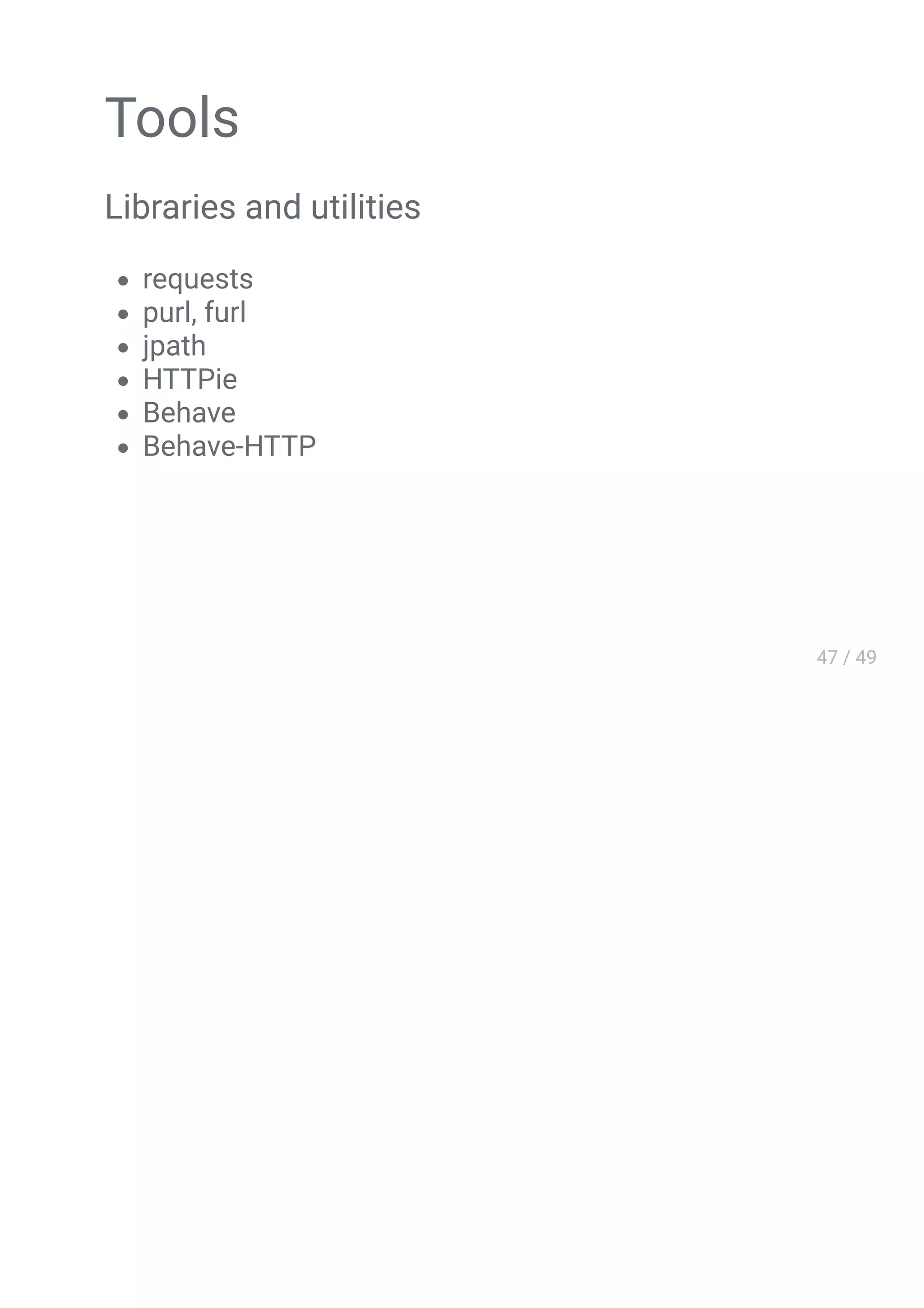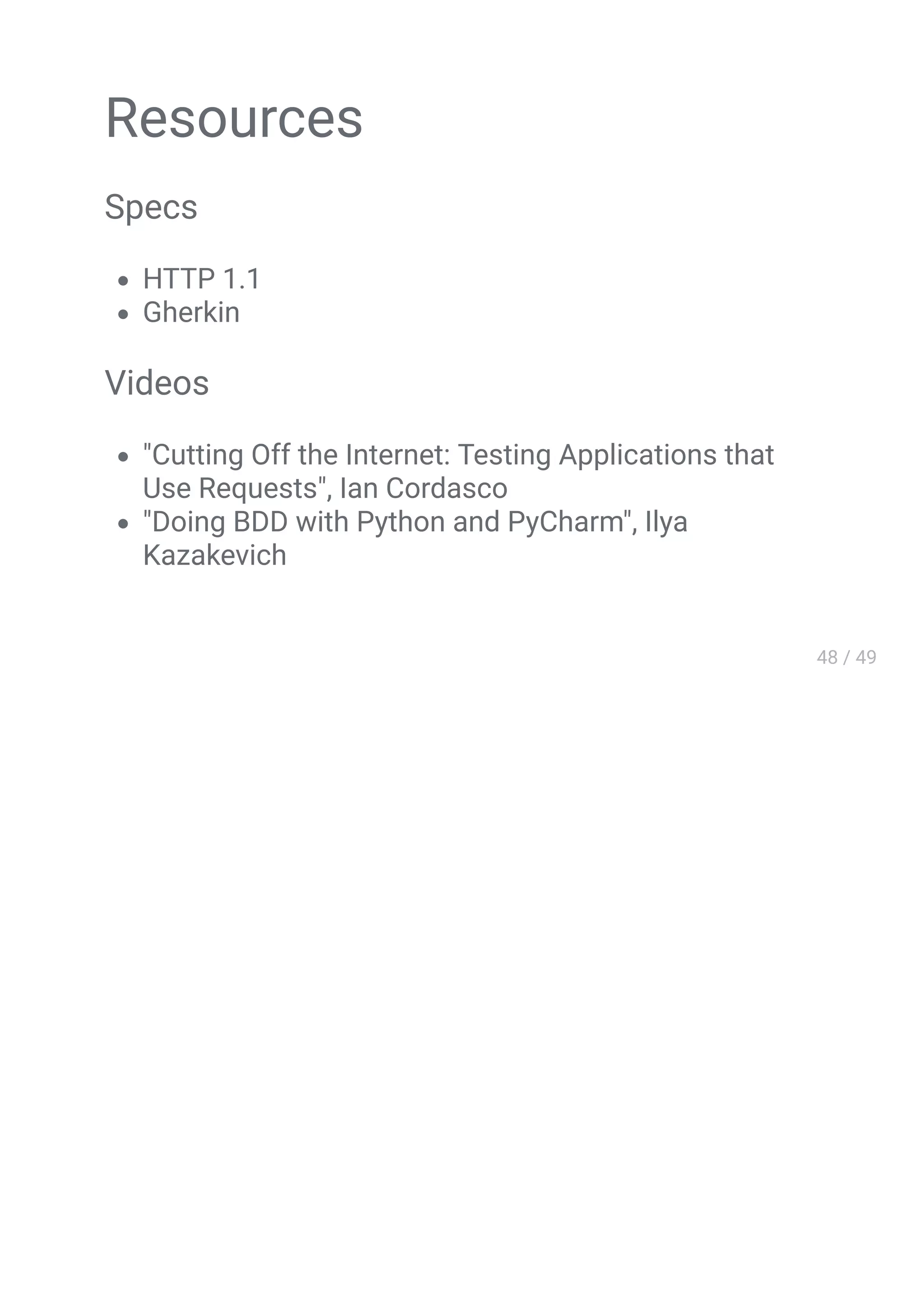This document discusses tools for testing web services over HTTP in Python. It introduces HTTPie, a command line tool for making HTTP requests, and Behave, a behavior-driven development tool that uses the Gherkin language to write human-readable test cases. The document provides examples of using HTTPie to debug services and Behave steps to test authentication on a sample API.




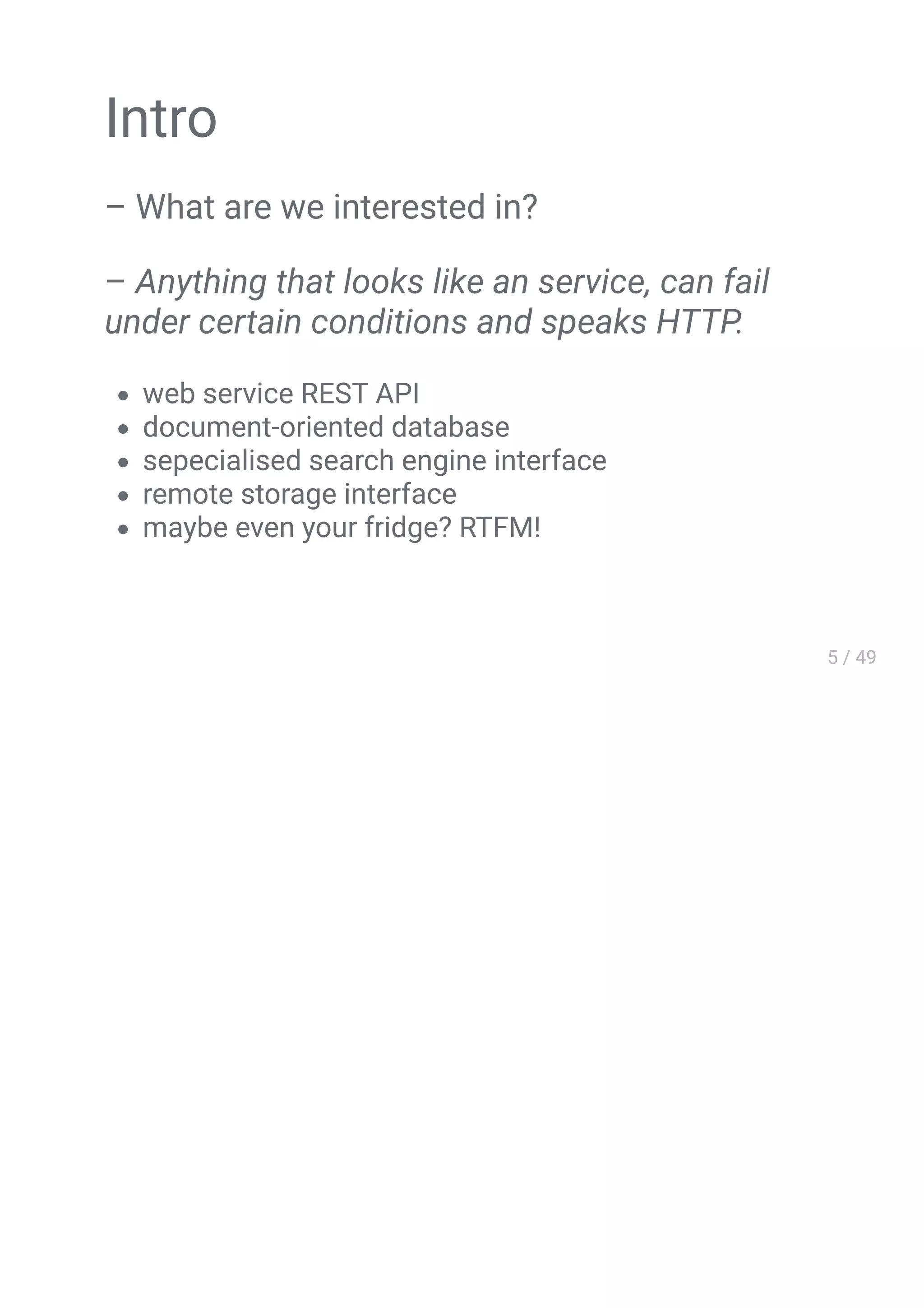
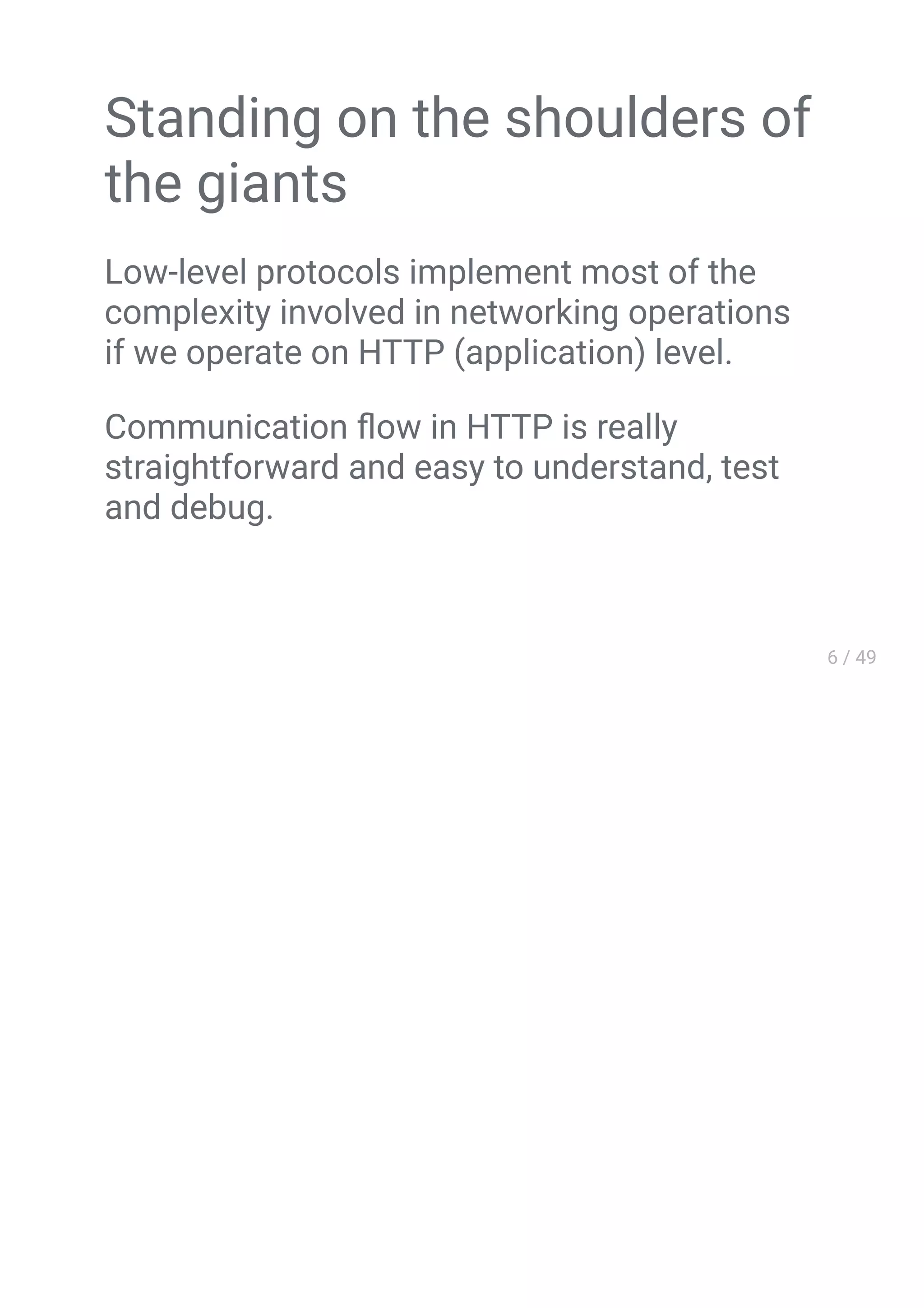

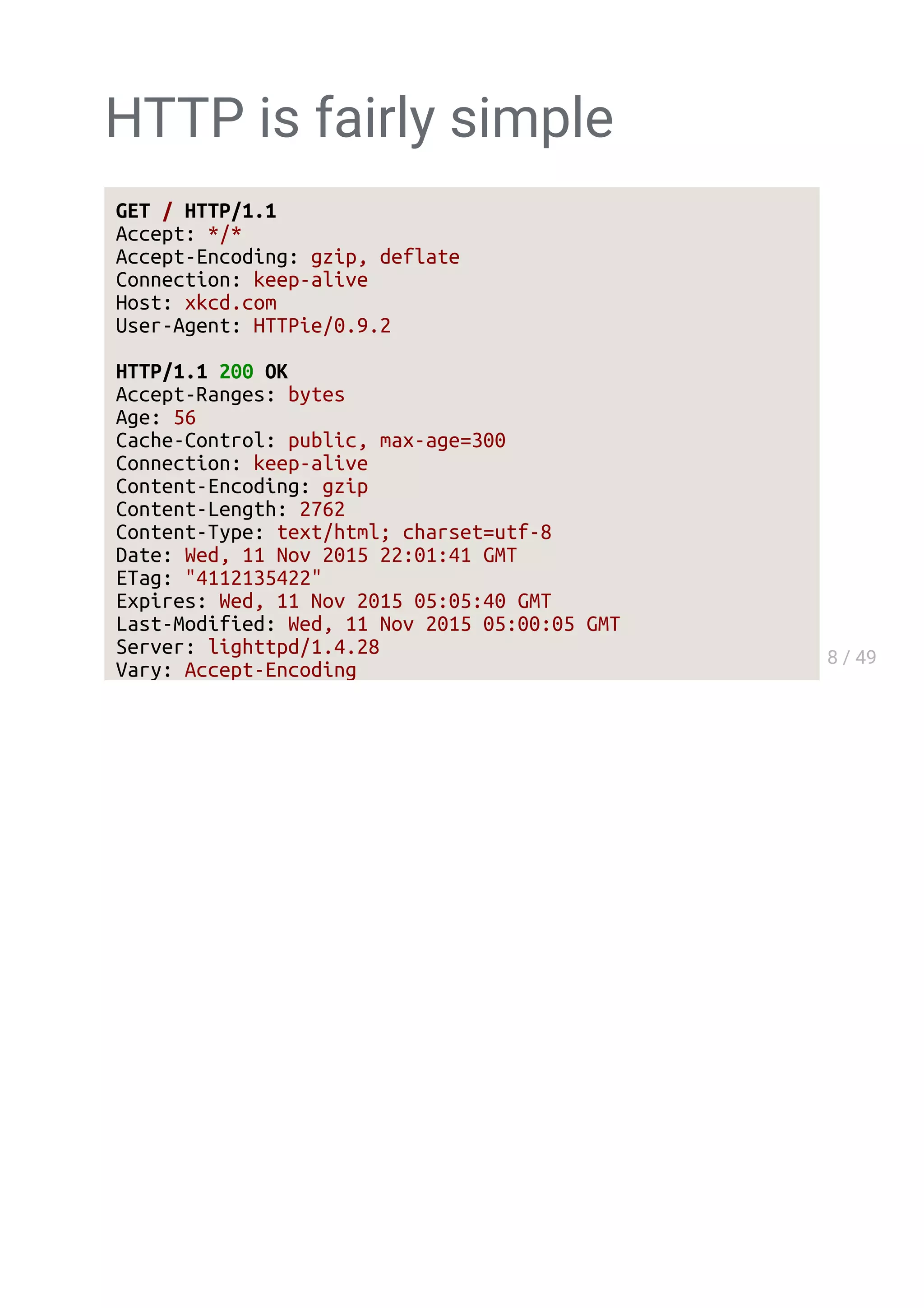

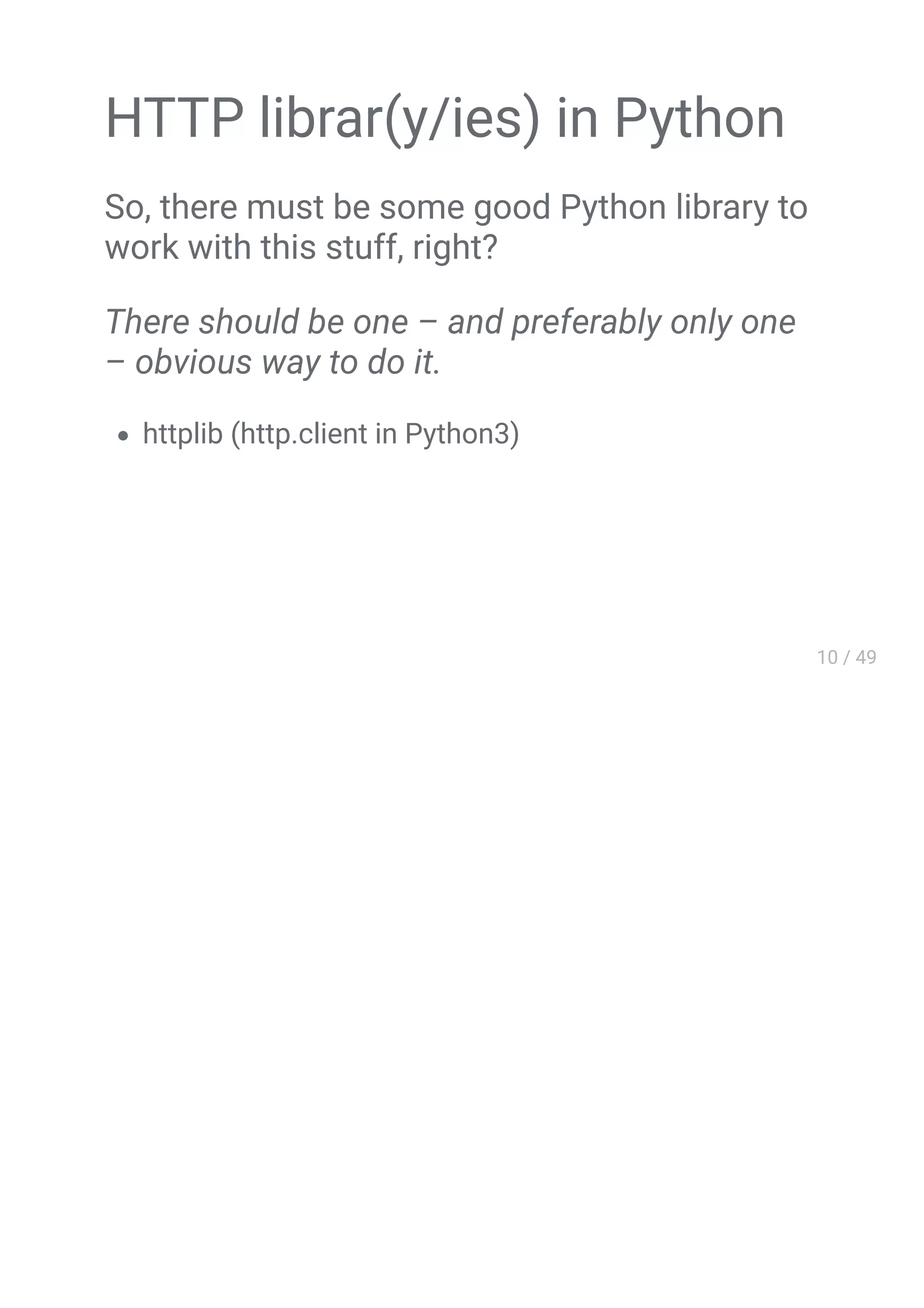
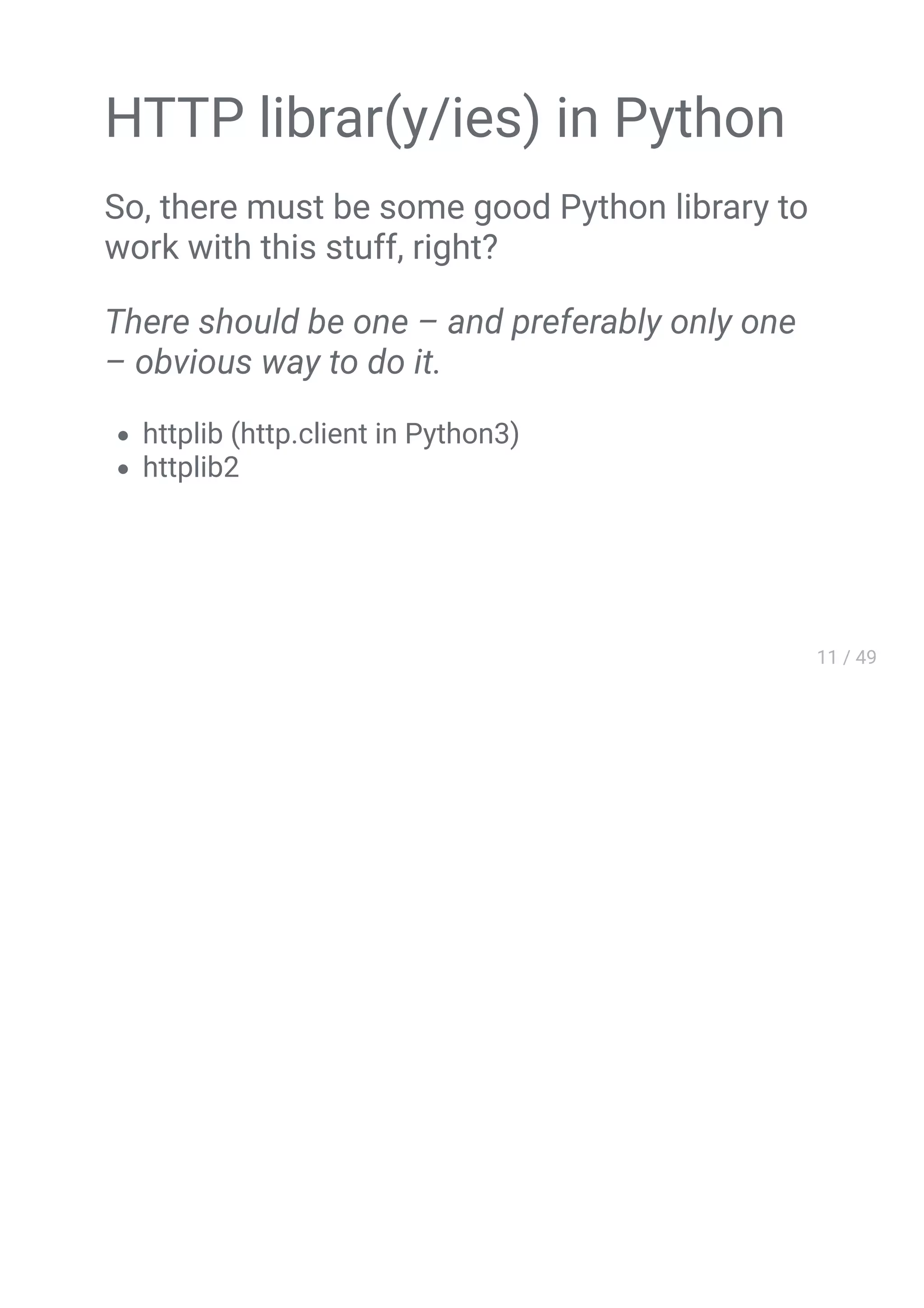
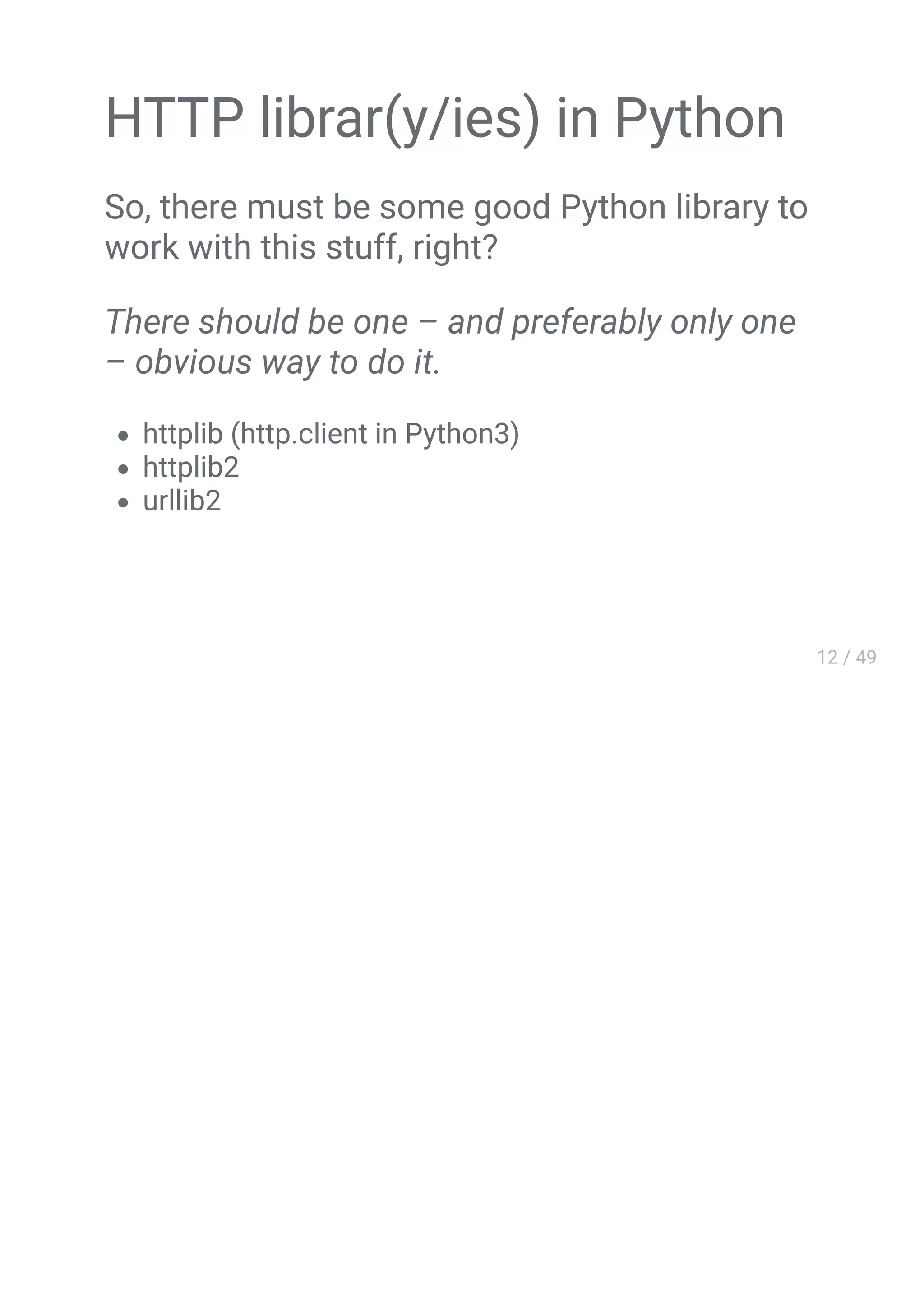
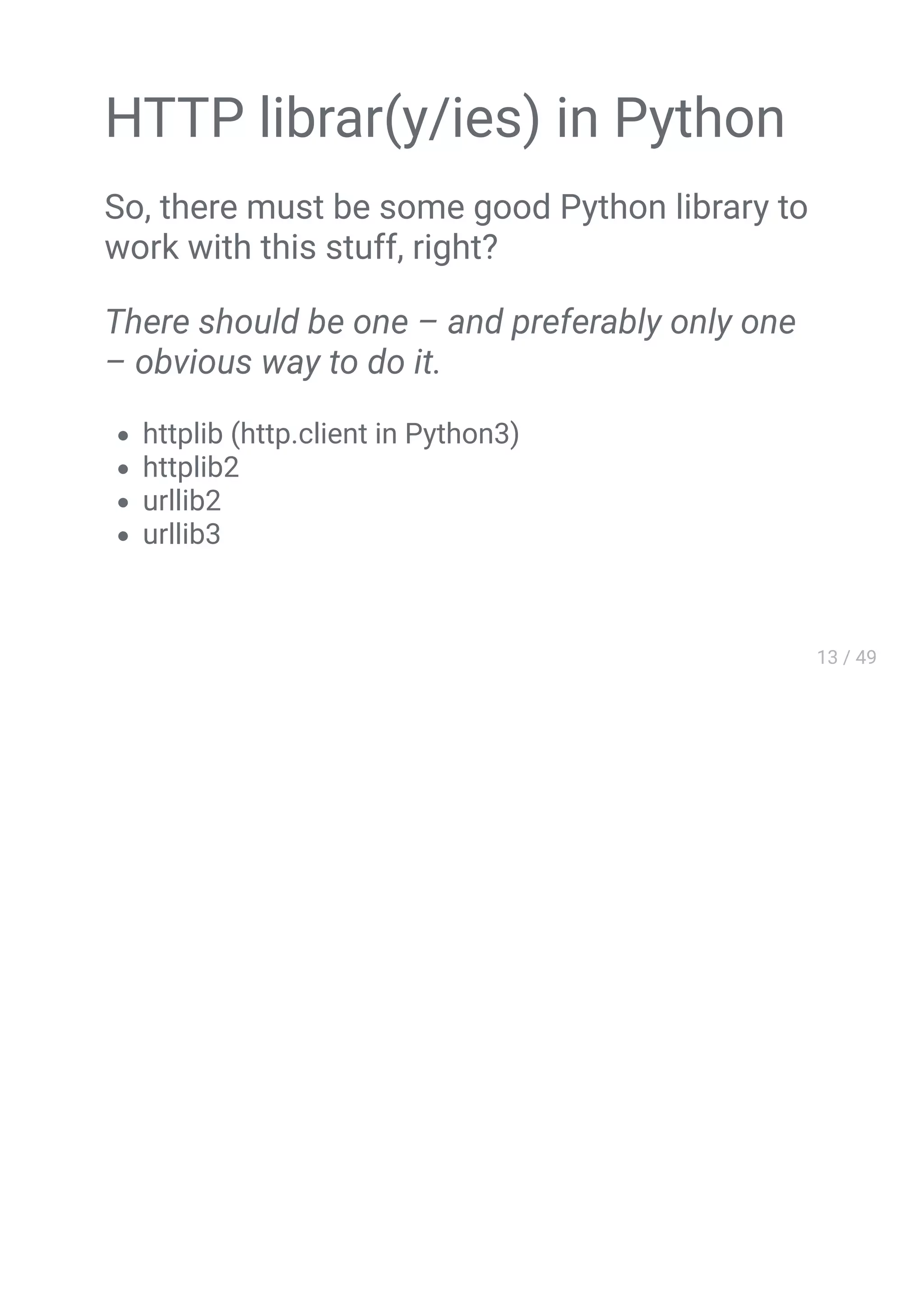
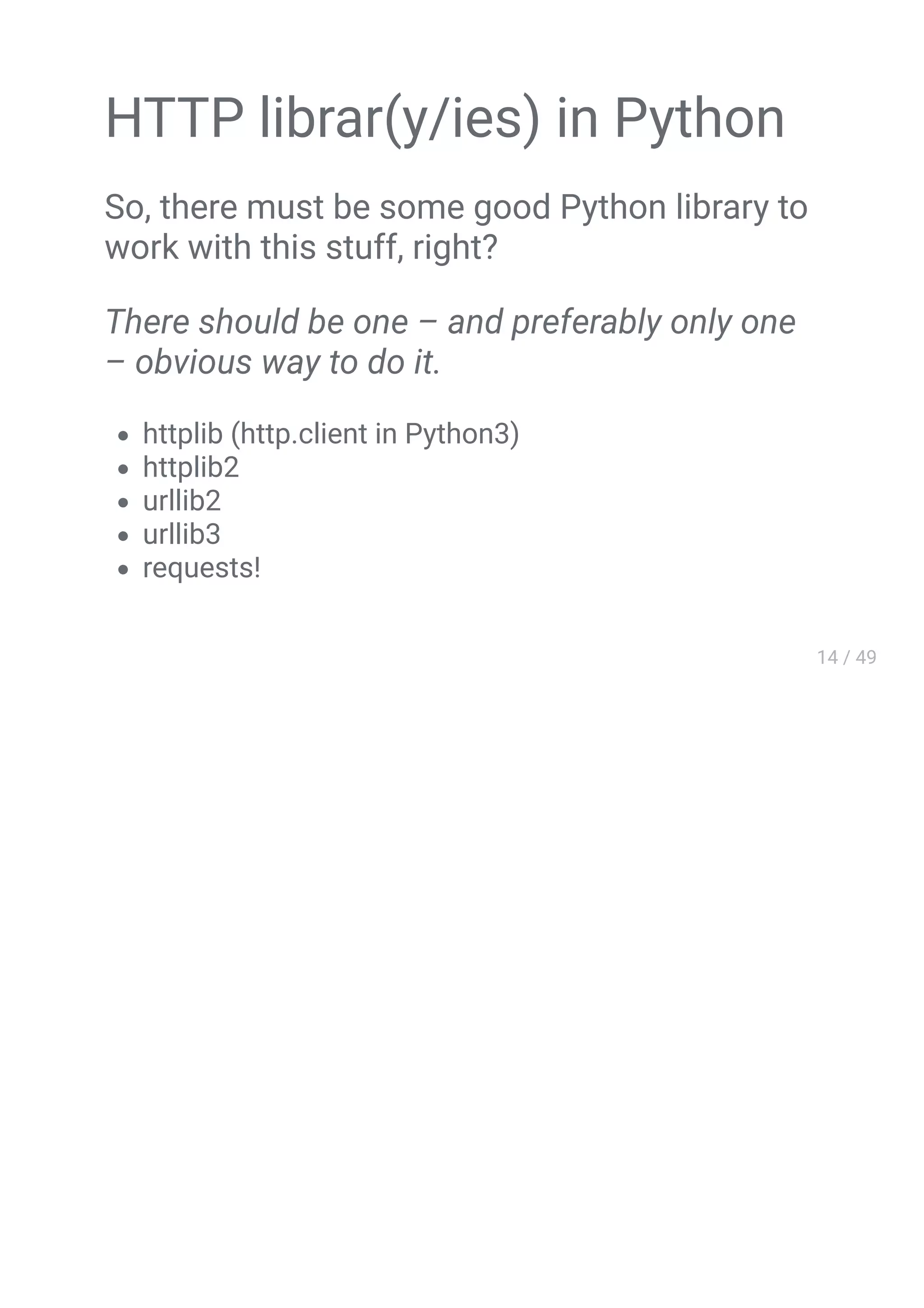







![HTTPie
JSON
$ http PUT api.example.com/person/1
name=John
age:=29 married:=false
hobbies:='["http", "pies"]' # Raw JSON
description=@about-john.txt # Embed text file
bookmarks:=@bookmarks.json # Embed JSON file](https://image.slidesharecdn.com/pythontoolsfortestingwebservicesoverhttp-151116221538-lva1-app6892/75/Python-tools-for-testing-web-services-over-HTTP-22-2048.jpg)
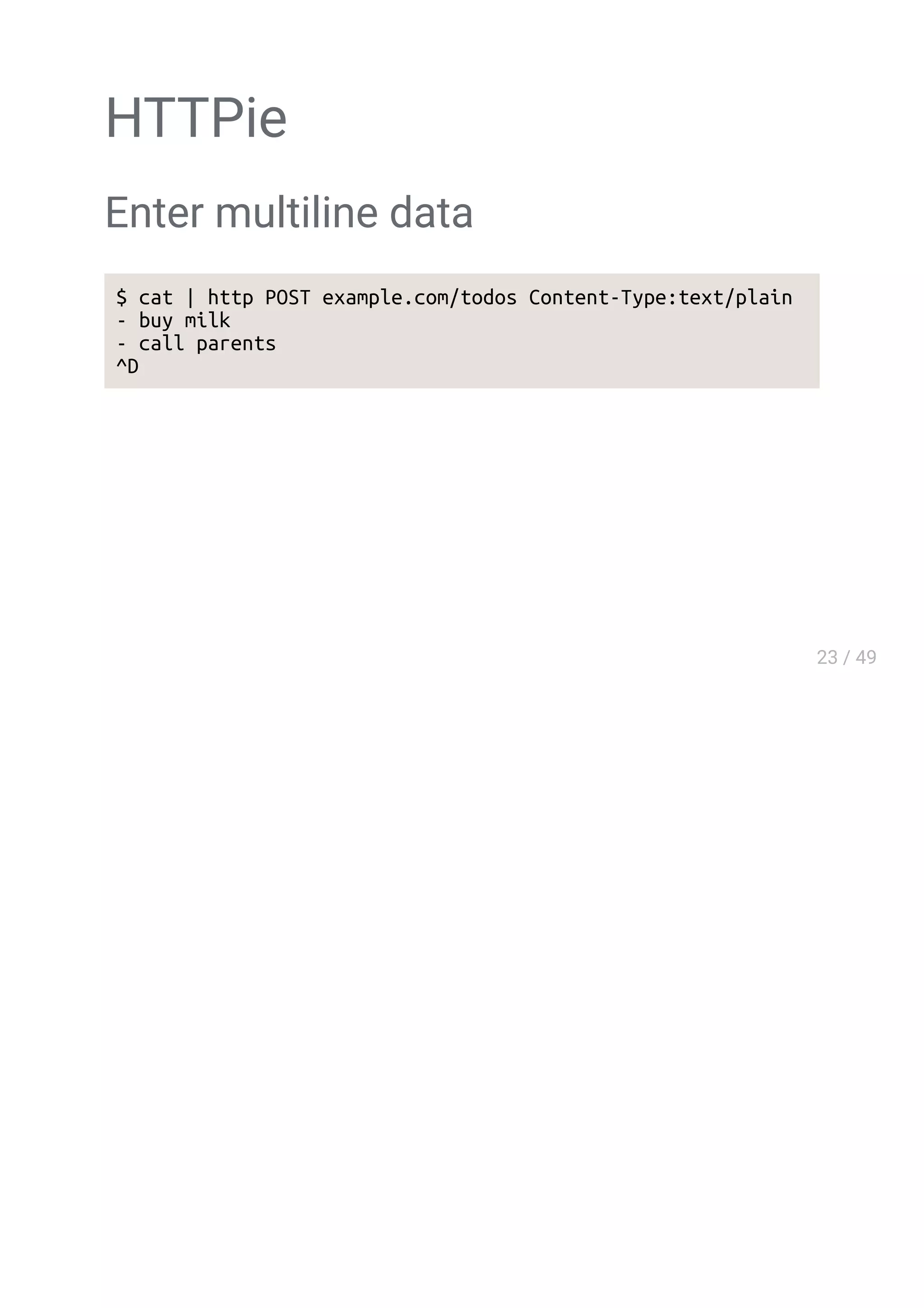

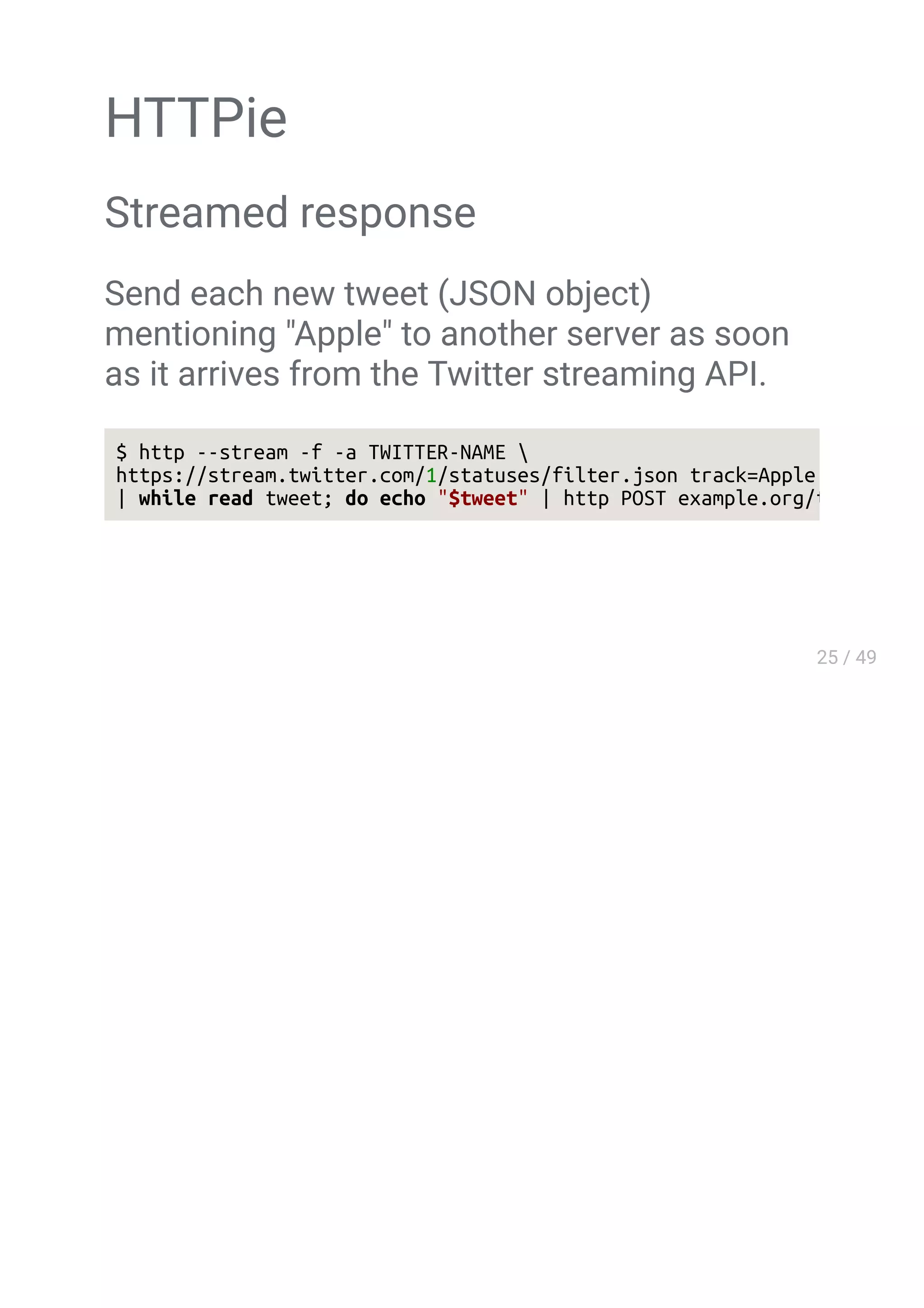


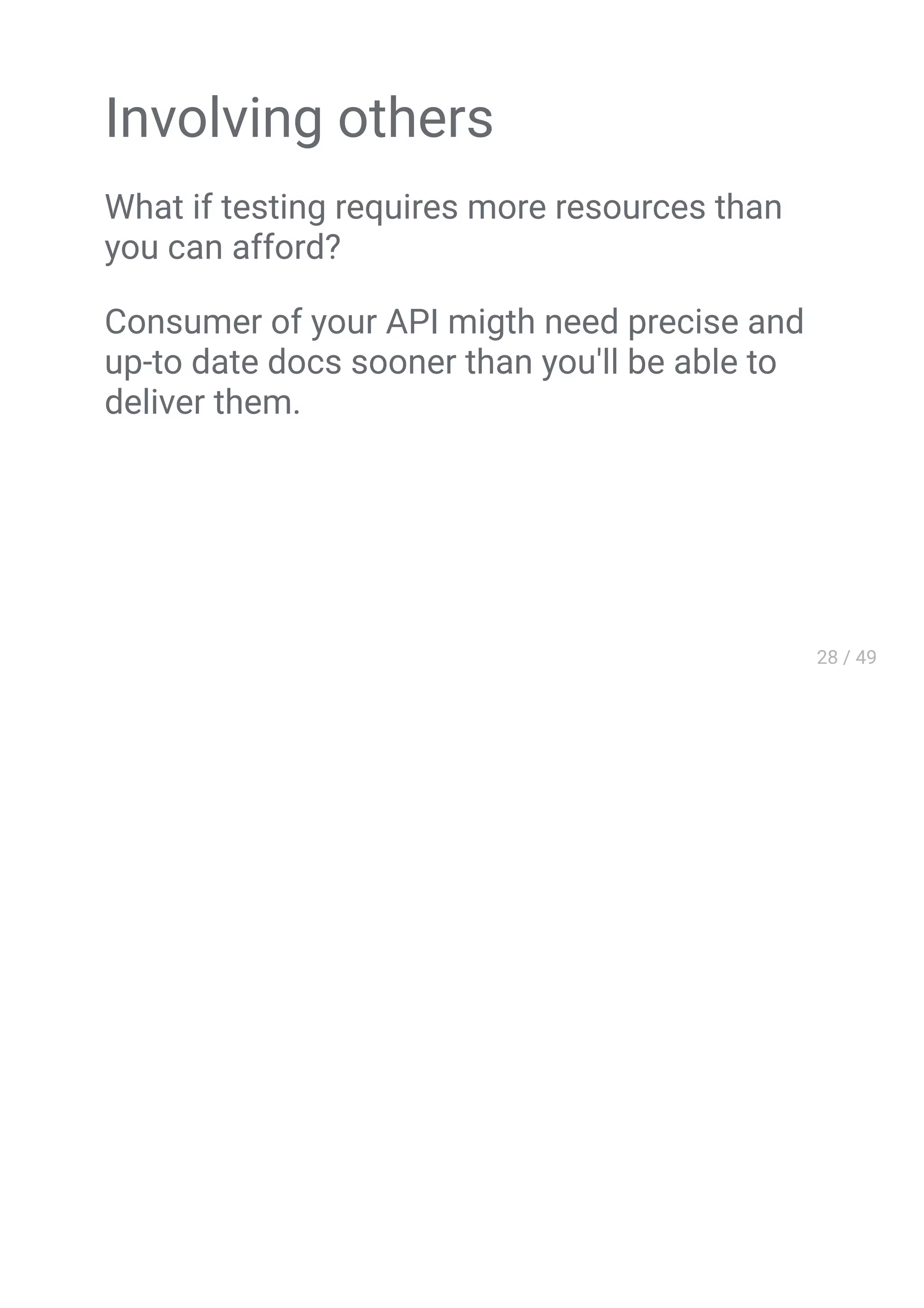
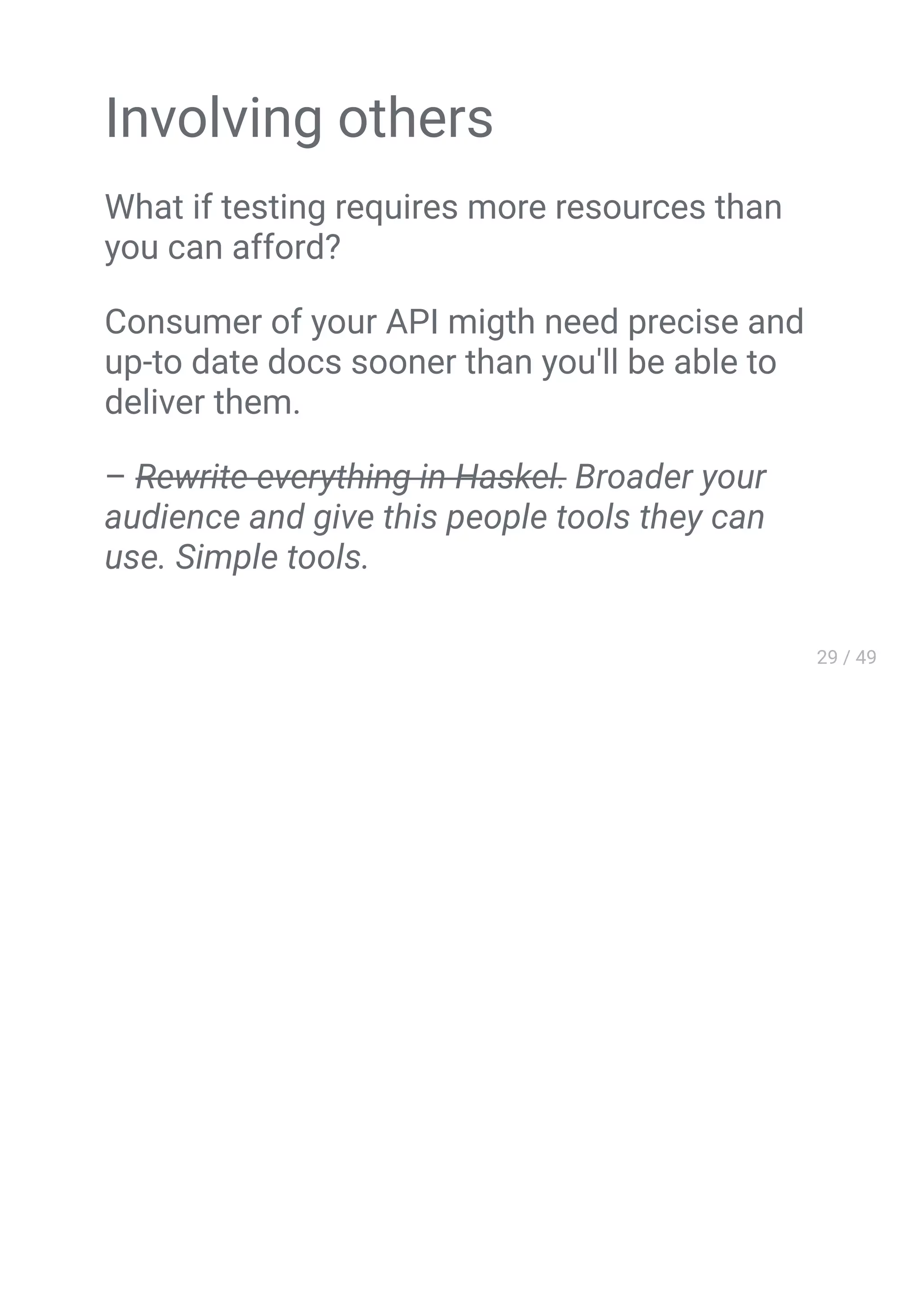
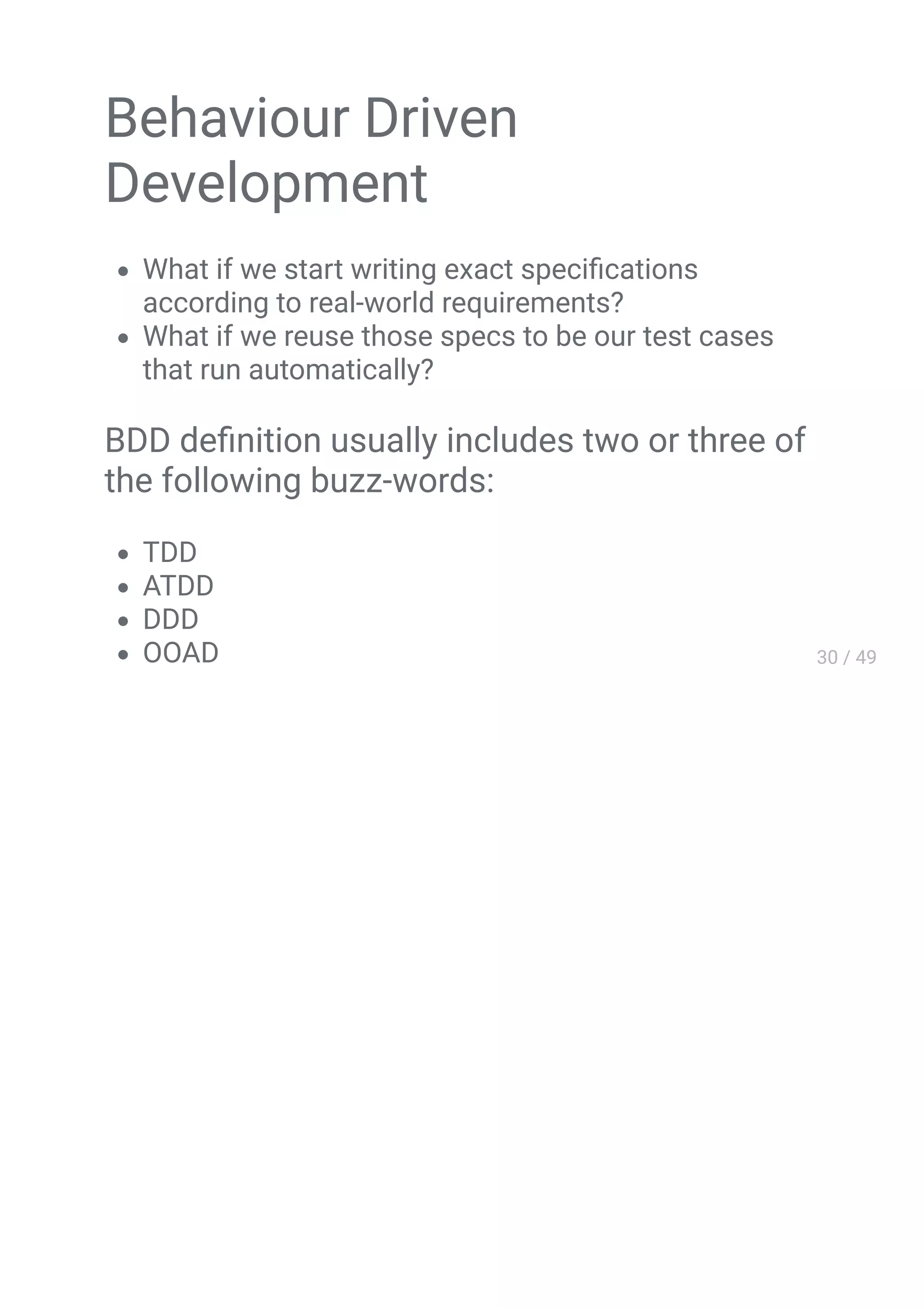
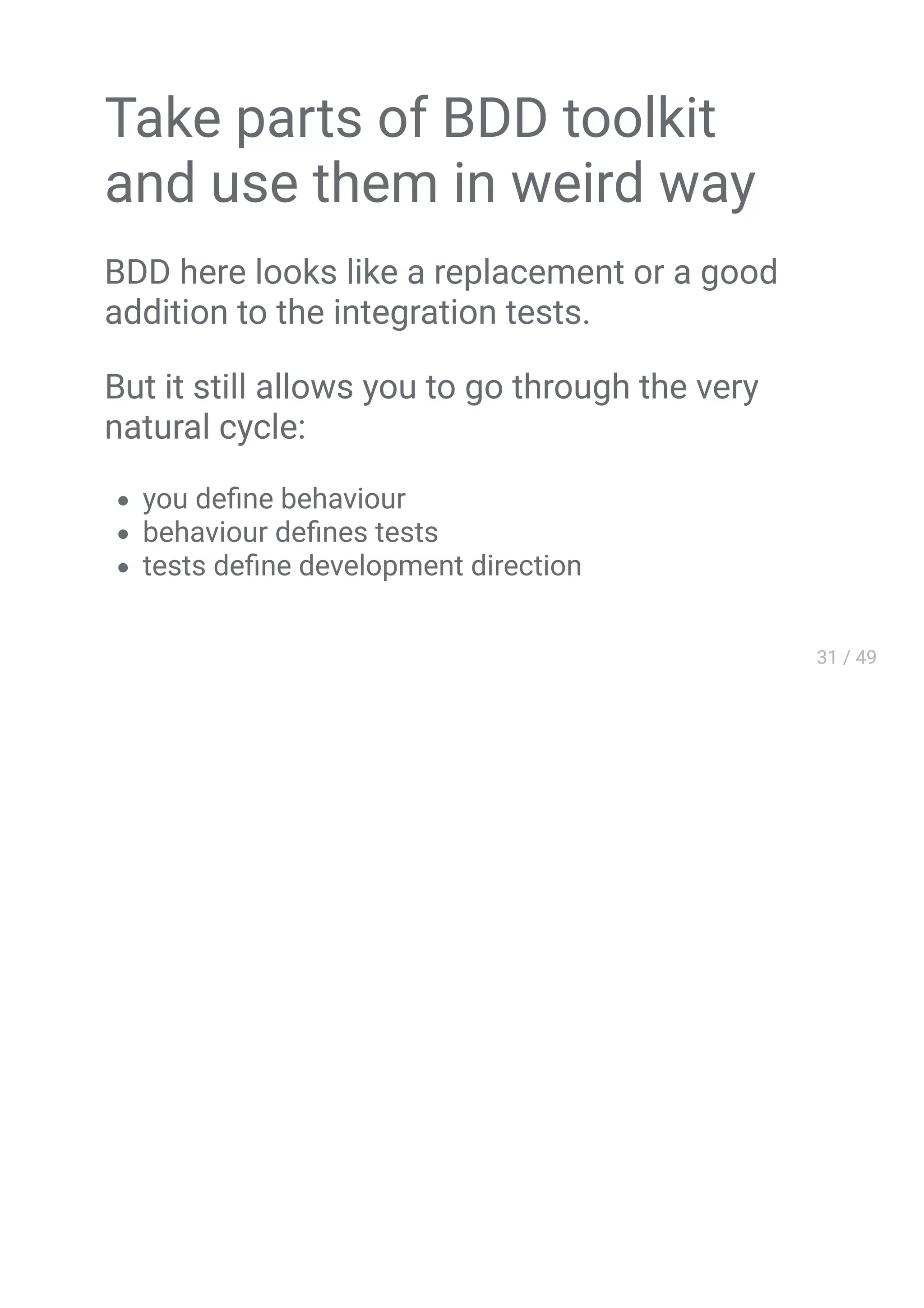



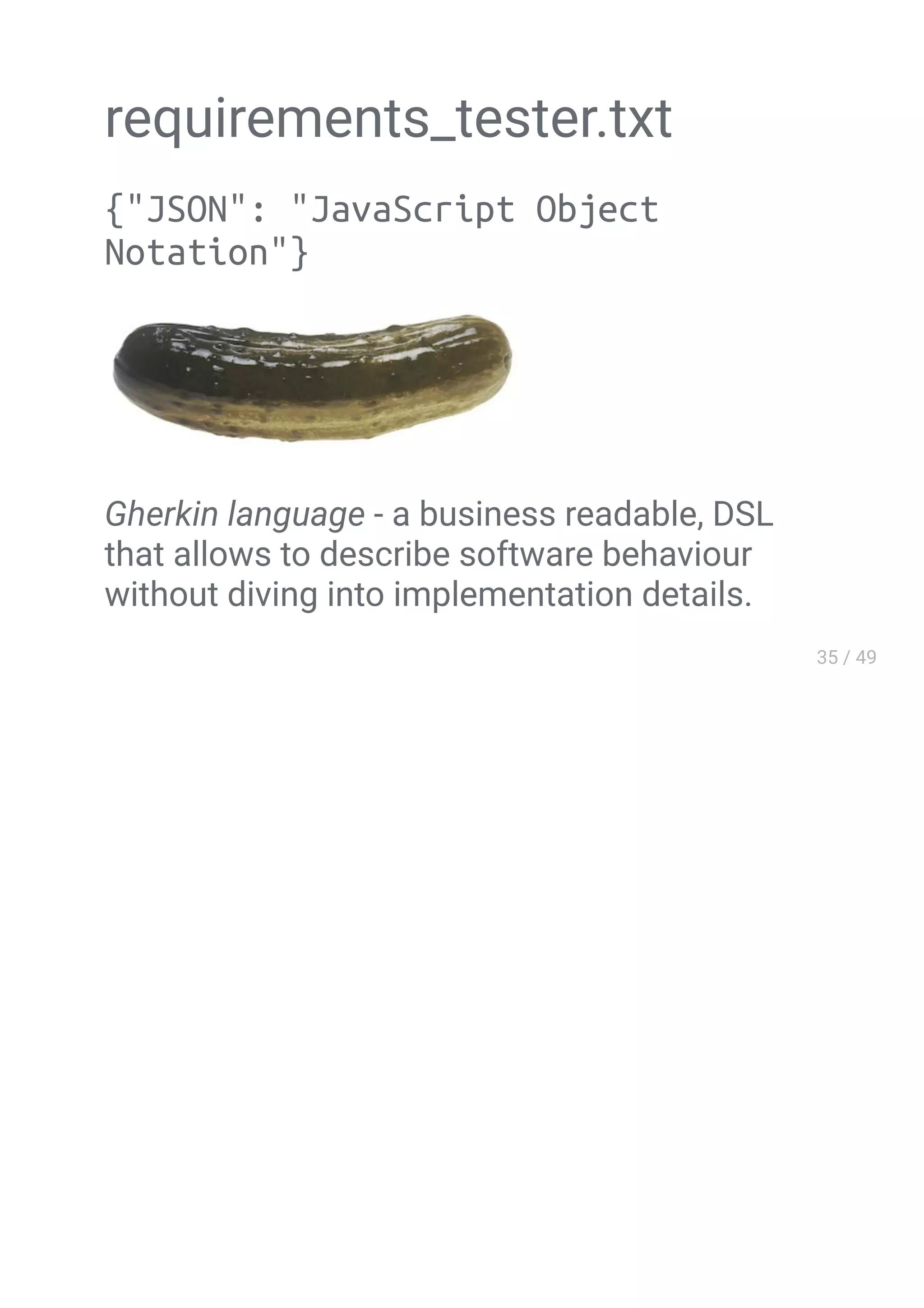
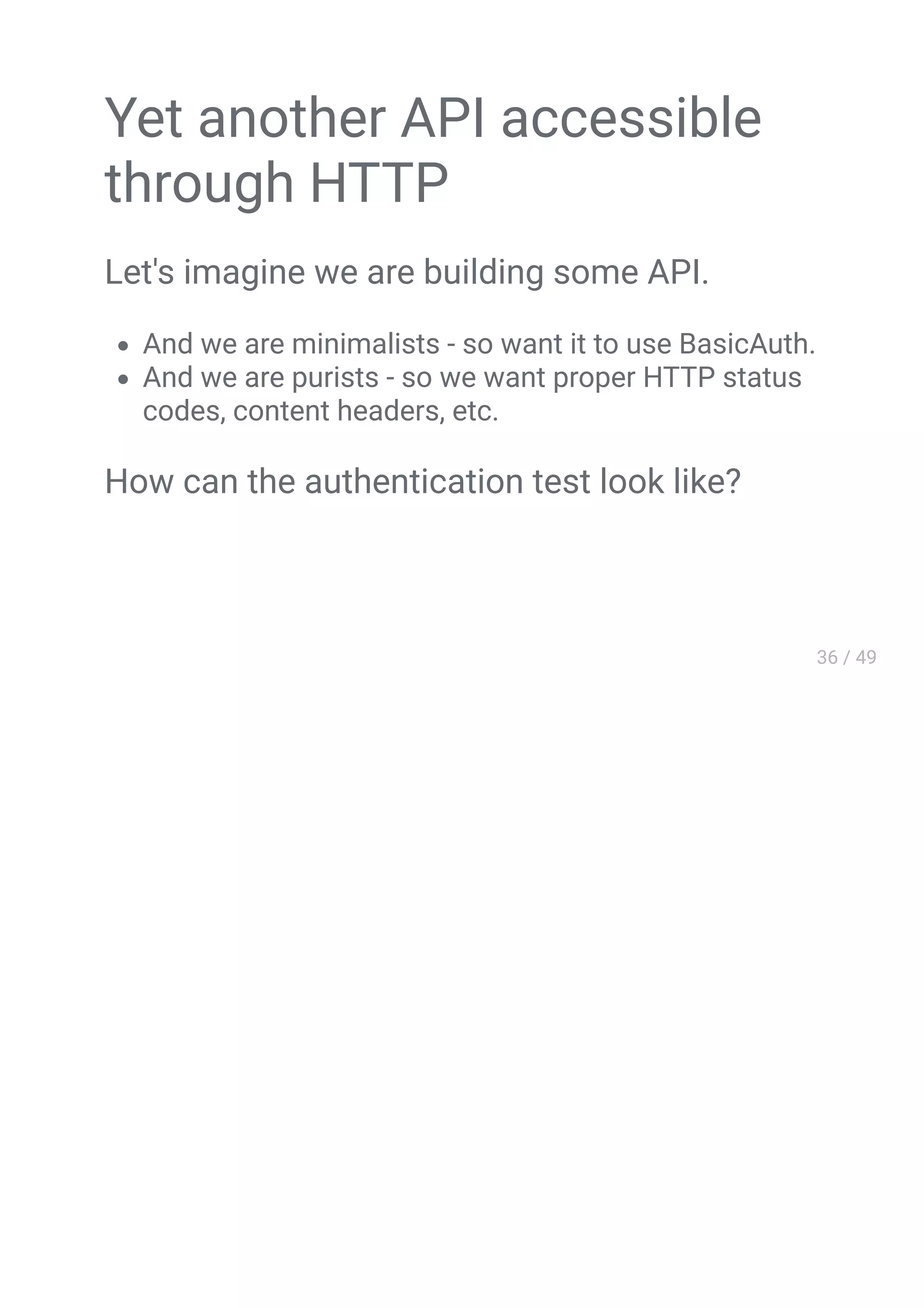
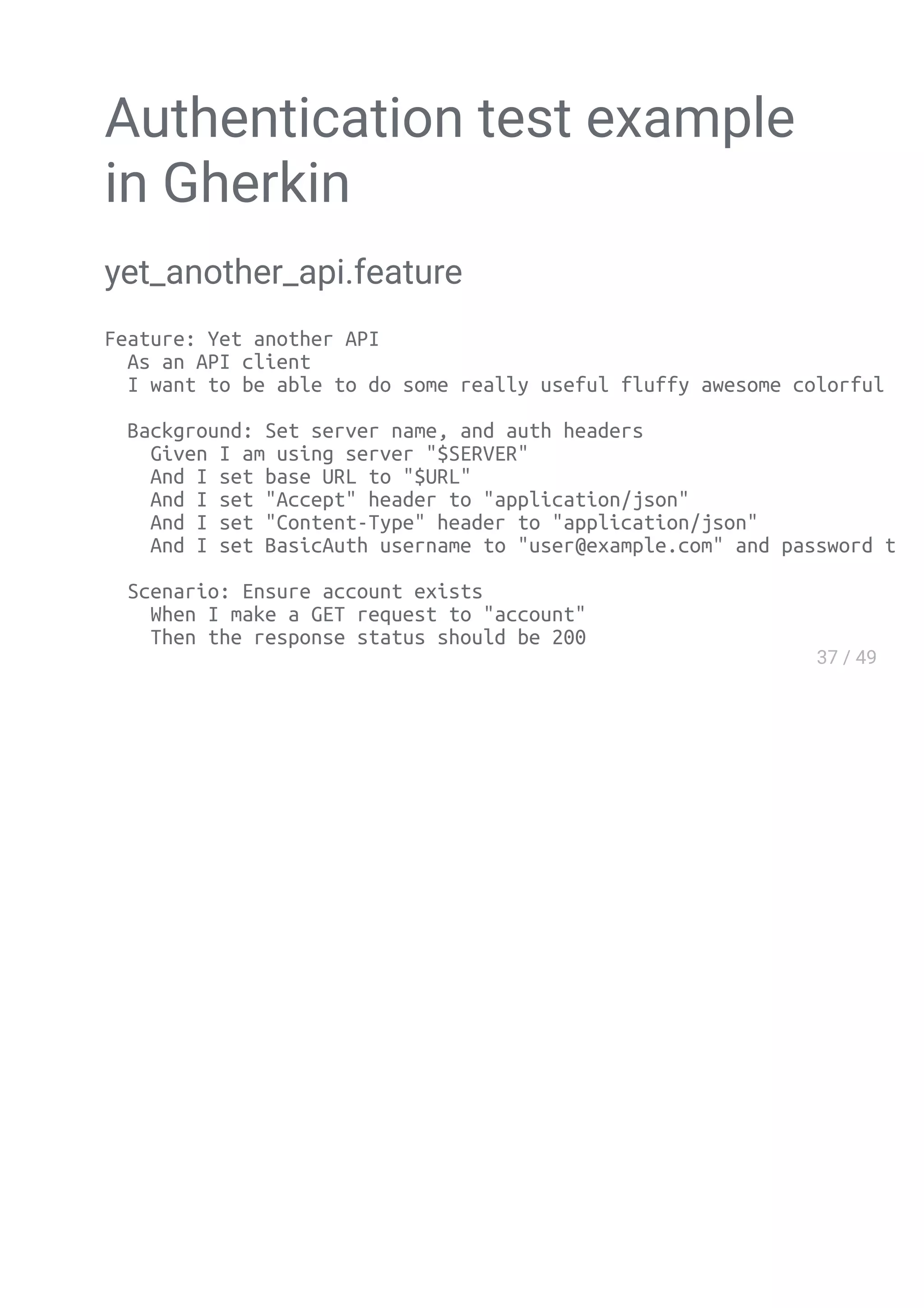

![Steps implementation
examples
@behave.given('I set BasicAuth username to "{username}" and password to "{passw
@dereference_step_parameters_and_data
def set_basic_auth_headers(context, username, password):
context.auth = (username, password)
@behave.when('I make a GET request to "{url_path_segment}"')
@dereference_step_parameters_and_data
def get_request(context, url_path_segment):
url = append_path(context.server, url_path_segment)
context.response = requests.get(
url, headers=context.headers, auth=context.auth)
@behave.then('the response status should be one of "{statuses}"')
@dereference_step_parameters_and_data
def response_status_in(context, statuses):
ensure(context.response.status_code).is_in(
[int(s) for s in statuses.split(',')])](https://image.slidesharecdn.com/pythontoolsfortestingwebservicesoverhttp-151116221538-lva1-app6892/75/Python-tools-for-testing-web-services-over-HTTP-39-2048.jpg)
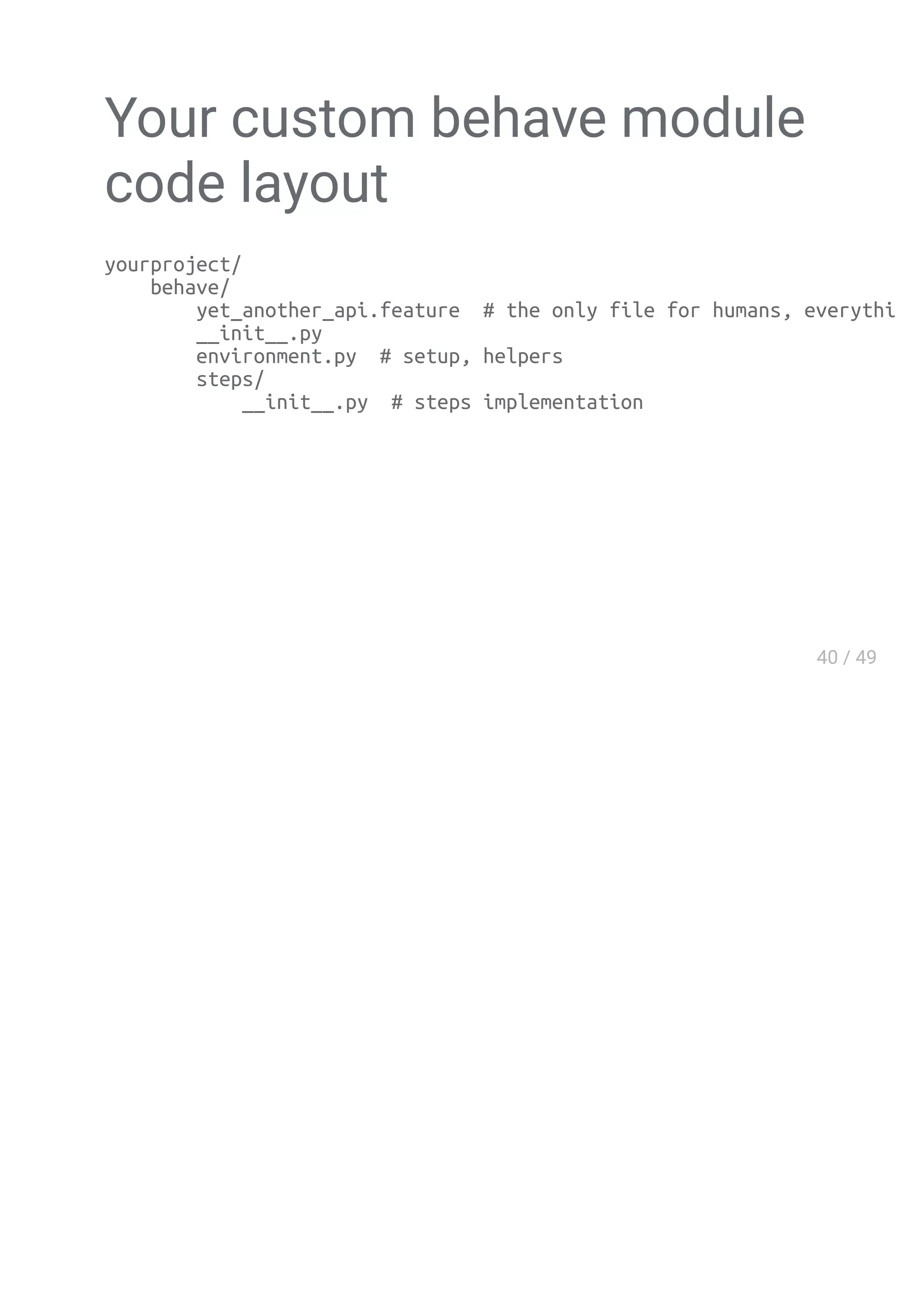
![environment.py
from behave_http.environment import before_scenario
APP_ROOT = os.path.normpath(
os.path.abspath(os.path.join(os.path.dirname(__file__), '..'
parse_config_file(os.path.join(APP_ROOT, "settings.py"))
default_env = {
'SERVER': 'http://localhost:8081',
'API': 'api',
[...]
}
credentials = {
'password': 'featuretester',
'email': 'featuretester@example.com'
}
def _recreate_account(db, auth, params , [...]):
[...]](https://image.slidesharecdn.com/pythontoolsfortestingwebservicesoverhttp-151116221538-lva1-app6892/75/Python-tools-for-testing-web-services-over-HTTP-41-2048.jpg)
![environment.py (continued)
def before_all(context):
for k,v in default_env.iteritems():
os.environ.setdefault(k, v)
app_url = URL(os.environ['SERVER'])
api_url = app_url.add_path_segment(os.environ['API'])
api_auth = (credentials['email'], credentials['password'])
# DB connection setup goes here
_recreate_account(db, auth, params , ...)
_add_account_data(api_url, api_auth)
def after_tag(context, tag):
"""Clean up database after destructive operation"""
if tag == 'modifies':
before_all(context)](https://image.slidesharecdn.com/pythontoolsfortestingwebservicesoverhttp-151116221538-lva1-app6892/75/Python-tools-for-testing-web-services-over-HTTP-42-2048.jpg)
![Example tag usage
[...]
@modifies
Scenario: Delete account, ensure it does not exist
When I make a DELETE request to "account"
Then the response status should be 200
When I make a GET request to "account"
Then the response status should be 401
@wip
Scenario: Create account
[...]](https://image.slidesharecdn.com/pythontoolsfortestingwebservicesoverhttp-151116221538-lva1-app6892/75/Python-tools-for-testing-web-services-over-HTTP-43-2048.jpg)
![Running tests
# behave -q -f progress3
HTTP requests # features/http.feature
Test getting context variable ......
Test GET request ......
Test POST request by checking we get the same JSON payload back .......
Test JSON path expection .......
Test JSON array length calculation .......
[...]
Test GET polling with checking for value that eventually succeeds ......
Test Basic Auth .......
1 feature passed, 0 failed, 0 skipped
17 scenarios passed, 0 failed, 0 skipped
121 steps passed, 0 failed, 0 skipped, 0 undefined
Took 0m0.516s](https://image.slidesharecdn.com/pythontoolsfortestingwebservicesoverhttp-151116221538-lva1-app6892/75/Python-tools-for-testing-web-services-over-HTTP-44-2048.jpg)
![Failing tests
[...]
Test JSON array length calculation ......F
--------------------------------------------------------------------------------
FAILURE in step 'the JSON array length at path "array" should be 3'
(features/http.feature:55):
Assertion Failed: Expected [1, 2, 3, 4] to have length 3
--------------------------------------------------------------------------------
[...]
Failing scenarios:
features/http.feature:49 Test JSON array length calculation
0 features passed, 1 failed, 0 skipped
16 scenarios passed, 1 failed, 0 skipped
120 steps passed, 1 failed, 0 skipped, 0 undefined
Took 0m0.313s](https://image.slidesharecdn.com/pythontoolsfortestingwebservicesoverhttp-151116221538-lva1-app6892/75/Python-tools-for-testing-web-services-over-HTTP-45-2048.jpg)

